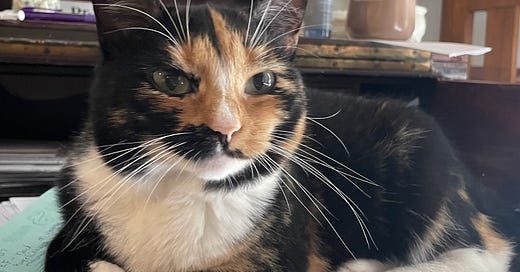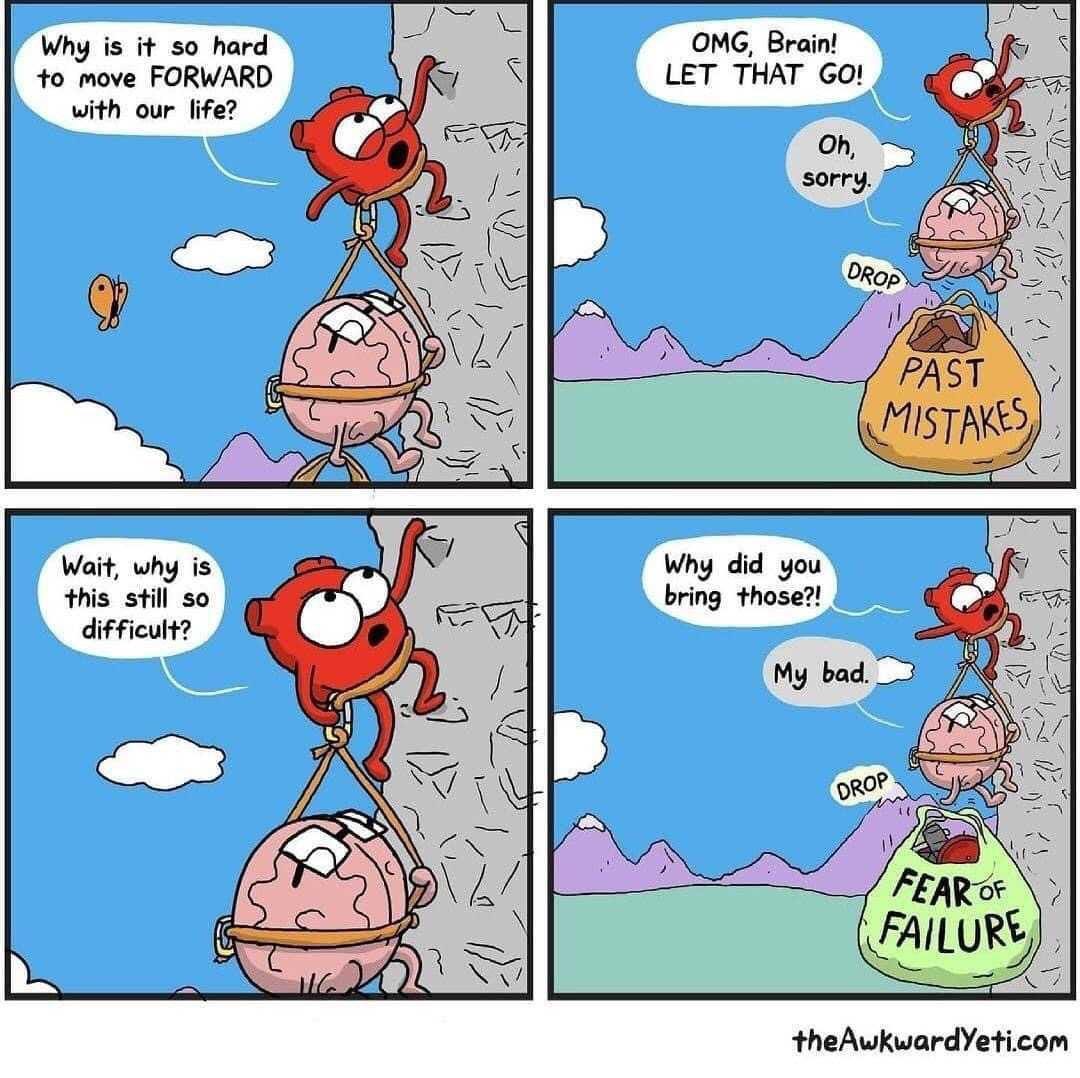Taking a Pause With Paws: Creating Mindful Moments With Our Pets
Why animals are the perfect models for mindfulness
I have a confession.
I have 5 cats. I admit I am still a bit self-conscious about it, assuming that others will label me as a “crazy cat lady.” But to know me, is to know that I love animals.
Now that we’ve got that out of the way.
When a cat hops in my lap, it is easy for me to pause whatever I am doing. With my most timid cats, it feels like a gift to have them visit. I slow my movements and experience a child-like sense of glee. I do not want to frighten her away.
Many of my most mindful moments occur naturally in the presence of my pets. When I say “mindful”, I mean those moments where my attention turns away from the stream of thoughts in my mind and tunes in to my environment, the here and now. I stop scrolling, typing, or puttering around the house. My mind becomes quiet.
What is Mindfulness?
Everywhere you look, we are told to practice mindfulness. The mental and physical health benefits range from decreased anxiety and depression, improved attention and cognitive flexibility, and better emotion regulation. Mindfulness is a core component of numerous therapeutic paradigms (For a comprehensive review of the psychological impact of mindfulness, go here).
Mindfulness refers to being fully aware in the present moment, without judging it or being too attached to it. Why is this helpful?
Where we put our attention has significant implications for how we feel and behave. We tend to spend a lot of our mental energy dwelling on the past (which can be associated with trauma and depression) or in the future (which can fuel anxiety). It takes practice and intentionality for many of us to keep our awareness of the present. The here and now is the only place where we can take meaningful action.
People with a strong mindfulness muscle are first able to notice where their attention is going. In mindful moments, we are intentional as opposed to “auto pilot.” You know those times when you realize you drove home and have no memory of it? You were likely absorbed in your thoughts.
The second part of mindfulness involves intentionally turning our attention from one part of our experience to another. With this awareness comes a distance from our thoughts and feelings, a helpful space that provides clarity and agency. It gives us the opportunity to decide, is this a thought I want to spend more time on, or not? If not, let’s turn our attention to something more worthy of it.
Here comes the thought train, do you really want to ride it to the station?
To illustrate, take a piece of paper (or imagine doing so) and write a few of your most anxious thoughts in large print across the page. Now hold that paper closely to your face. What do you see? What emotions arise? What sensations do you notice in your body?
Now take the paper and move it further from your face, as far as your arm can comfortably stretch. Take a moment to notice the thoughts on the page again. How does your experience of the thoughts change?
You might notice when the paper is right in front of your nose, that the words are all you can see. This is a metaphor for the way our internal experiences can feel all encompassing. When we experience our thoughts and feelings this way, they can be mistaken for facts, or truth, instead of fleeting experiences.
Hopefully, moving the paper away provides you with some emotional space from the anxiety-provoking thoughts. You can still see them there, but you can also see that much space exists around them, behind them, and between you and them. It allows you to take in other information and keep the thoughts in context. Yes, they are there, and yet they are not the ONLY thing that is there. They are one thing you are experiencing; they are not YOU and they are not YOUR LIFE.
See the appeal? Practicing mindfulness helps strengthen the internal perspective-taking muscles that help us relate to our thoughts and feelings in this way.
I have lived with many Zen masters- all of them cats.
- Ekhart Tolle
Animals are particularly suited to support their human counterparts with mindfulness. As far as we know, animals live only in the present. We have no reason to believe that they are ruminating about the past, or entertaining possible “what if’s” about the future. Many of us perceive our pets as unconditionally loving and non-judgmental (despite what some may say about their cats!) I never expect my pets to multi-task, they are single minded in whatever they set out to accomplish.
I wonder what is happening in my cat’s mind as she sits patient and alert at the window, watching the finches that perch on the hedges outside. Or what my senior dog is thinking, if anything, as she lays in the warm sun on our deck. I imagine that she is only concerned with the warmth and the breeze, the sounds of the birds, and the occasional bug that lands on her fur.
Animals are not only mindful when they are at rest. Imagine a dog leaping for a ball, expertly timing his catch. He is fully in his body, moving on muscle memory and instinct. He is not in danger of spoiling his performance by getting in his head, overthinking his next move or comparing himself to the dog next door.
Lest you think I’m partial to only fur-babies, I assure you that any scaley, feathery, or aquatic creature can inspire a mindful moment. Watching an aquarium. Birdwatching. I was amazed at the peacefulness I experienced the first time I held a snake!
The trick with any coping skill or mental wellness strategy is to make it sustainable for you and your lifestyle. If you are like me, you may not be eager to sit quietly in meditation, imagining your thoughts as leaves floating along the river. But do not let this discourage you from mindfulness or meditation practice. The exercise of imaging your thoughts as leaves is simply that, an exercise. The point is to strengthen your ability to pay attention to something right here, right now. Just like strengthening your bodily muscles, there are many exercises that can accomplish the goal, and your pets can help.
Practice: Mind Your Pets
Tune in with your eyes. Notice all the most adorable features of your pet. What features first capture your attention? Zoom in to her face, the color and shape of her eyes and nose. Notice the color and length of her whiskers. Isn’t it funny that our dogs and cats have these long coarse hairs protruding from their face, but most of the time they seem to fade from our awareness? Note the shape of her mouth, her chin, and her ears. Notice the patterns and texture of her furry face.
Shift your attention to the sensation of touch. If your pet does not mind, stroke her fur and really notice what you feel. What is the texture? Is her coat short and coarse or long and soft? How dense or thick? Is the texture or length of her fur different on her back, her chest, her belly?
If your pet is on your lap, direct your attention to how it feels to have her there. Notice the weight and warmth of her. Is she calm and still or wiggly and restless? If she’s a cat, she may be pacing back and forth across your lap. Notice the feeling of her paws and the slight pressure of her claws.
If your pet does not want pets or snuggles, just take note of their actions. Notice their posture, their gait, what their tail is doing. Take note of the subtle movements of their ears. Animals have their own body language, which is more nuanced than ours. What is your pet communicating to you?
And of course, tune into what you hear. Is your pet sighing or panting? If you have a cat, is she purring? A cat’s purr is unique. Some are loud and rolling, others are barely perceptible. Place your hands beneath her throat and notice if you can feel that little rumble. Perhaps she is silent, and that is fine too.
If at any point during this exercise you notice your attention straying from your pet to your thoughts, try to bring your attention back to your senses and what you are experiencing. If your mind wants to chatter, simply label what you notice on your furry companion, her colors, patterns, softness…. whatever comes to mind. The point is to practice turning your attention, purposefully, back to the present.
These mindful moments with our pets do not need to be still. You can be mindful while walking your dog or playing catch in a park. Mindfulness practices can include experiences in which we are fully and one mindfully engaging in an activity, like dancing, horseback riding, painting, or singing. Like the dog catching a ball, the only requirement is that you give the activity your full and undivided attention. Your pet can thank me later.
I would love to hear more about how your pets support you with your mental wellness. Who are your furry family members and how do they help? Who has the most exotic or uncommon pet? Let’s chat in the comments!
Oh, and you can comment about mindfulness too, I guess.
A special thanks to
for helping with the title for this piece, and for suggesting the phrase “mind your pets”!Did you know?
I am writing about the psychological tools that I most often teach to my clients in therapy. These skills are meant to build on one another, to support you in growing your own skill set too. If this article was helpful, I suggest you also check ones you may have missed:
And make sure you are subscribed to stay up to date!
Disclosure: Dr. Amber_Writes is a newsletter designed to be informational, entertaining, and engaging. It is not therapy. Following this newsletter does not establish a therapeutic relationship with me. Dr. Amber_Writes, and other written communication by Amber Groomes on Substack, is not a substitute for treatment, diagnosis, or consultation with a licensed mental health professional. I assume no liability for any action taken in reliance on my writing here at Dr. Amber_Writes.











I loved your note about the emotional growth of your kitty and it drew me to this beautiful article! I always knew my cat Banjo helped me practice presence but your wisdom helped me understand why. Thank you for that. I was delighted that I knew the answers to all the questions in your exercise because I’ve studied him so intently! The weight of his body on my left side each night is a feeling that brings me such peace.
I was shamed as a child for caring “too much” about animals (particularly strays) when there were “more important” things to focus on. It wasn’t until my early 40s that I stopped hiding my love and fascination for animals. I am a volunteer at a homeless animal shelter now. Being in the presence of dogs (which I didn’t know much about) has delighted me in ways I didn’t expect! I have enjoyed writing about those experiences instead of keeping them to myself.
Thank you for opening up this beautiful dialogue. I am so fond of the way you weave storytelling with psychology. You’ve got a new reader today.
OH MY GATOS! My cats arrest me multiple times throughout the day. We are so lucky to have these strange furry companions guiding us through it all. Glad to have validation from a doctor that being a cat lady is not crazy.